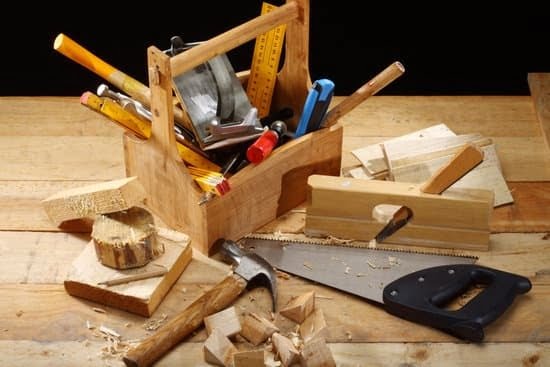Colonial woodworking in early America was both a necessity and an art form. From furniture to tools, colonial woodworkers played a crucial role in creating the objects that shaped everyday life in the colonies.
In this article, we will explore the history of colonial woodworking and take a closer look at the tools, materials, and techniques used by these craftsmen. We will also examine the wide range of everyday objects, furniture, and specialty items that were skillfully crafted by colonial woodworkers.
The woodworking trade was an essential part of colonial society, with skilled artisans producing a variety of items for both practical and decorative purposes. From household implements to fine furniture pieces, woodworkers were in high demand to supply the needs of growing communities. Understanding the methods and materials used by these craftsmen provides valuable insight into the daily lives of early American settlers.
In addition to examining specific objects created by colonial woodworkers, we’ll also delve into the techniques and skills that made their work distinctive. By gaining an understanding of colonial woodworking practices, we can appreciate its lasting legacy on modern society. Join us as we explore this fascinating aspect of early American history and craftsmanship.
History of Colonial Woodworking
The history of colonial woodworking is a fascinating look into the craftsmanship and skills of early American woodworkers. Colonial woodworking was a vital trade, as wood was abundant in the colonies and used for everything from building homes to crafting furniture and everyday objects. The practice of woodworking in colonial America was heavily influenced by European traditions, but over time, colonial woodworkers developed their own unique styles and techniques.
During the colonial period, woodworking was essential for constructing homes, barns, and other buildings. Woodworkers used hand tools such as axes, saws, planes, chisels, and mallets to shape and join timber into sturdy structures. They also utilized materials such as oak, maple, pine, and cedar to create durable and long-lasting wooden objects.
Colonial woodworkers were skilled in crafting a wide range of everyday objects that were essential to early American life. These items included:
- Wooden kitchen utensils such as spoons, bowls, and cutting boards
- Tools for farming and gardening like rakes, hoes, and shovels
- Household items including washboards, butter churns, and candle holders
These practical objects served important functions in colonial households and were created with meticulous attention to detail by talented woodworkers. The legacy of their work can still be seen today in the antique wooden artifacts that have survived over centuries.
Tools and Materials Used by Colonial Woodworkers
Tools
A colonial woodworker’s toolkit typically included hand saws, chisels, mallets, planes, drawknives, and spoke shaves. These tools were essential for shaping and carving wood into functional and decorative items.
In addition to hand tools, colonial woodworkers also used traditional joinery techniques such as dovetail joints, mortise and tenon joints, and tongue and groove joints to connect pieces of wood together. These methods required precision and skill to ensure the stability and longevity of the finished product.
Materials
Colonial woodworkers primarily worked with locally sourced hardwoods such as oak, maple, cherry, walnut, and pine. These woods were readily available in the colonies and provided durability for everyday objects and furniture. In some cases, exotic woods imported from Europe or the Caribbean were used for specialty items or for adding decorative elements to furniture pieces.
The combination of skilled craftsmanship and high-quality materials resulted in a wide range of products made by colonial woodworkers that served both practical purposes and aesthetic appeal. From simple household necessities to intricate furnishings, these objects reflected the artistry and expertise of colonial woodworking.
Everyday Objects Made by Colonial Woodworkers
Colonial woodworkers were skilled craftsmen who played a vital role in shaping the material culture of early American society. They produced a wide variety of everyday objects that were essential to the functioning of colonial households. These woodworking artisans utilized a combination of traditional hand tools and locally sourced materials to create practical items that served both utilitarian and decorative purposes.
Some of the everyday objects made by colonial woodworkers included:
- Wooden kitchen utensils: Colonial woodworkers crafted a range of kitchen tools and utensils, such as spoons, spatulas, rolling pins, and butter molds, from different types of wood like maple, cherry, and walnut. These items were indispensable for food preparation, cooking, and baking in colonial homes.
- Storage containers: Woodworkers also created storage containers like barrels, buckets, crates, and chests for storing food, clothing, and other household goods. These wooden containers were often used to transport goods over long distances or to securely store provisions within the home.
- Household implements: Additionally, colonial woodworkers produced household implements such as candlesticks, washboards, cutting boards, and yarn swifts. These items contributed to the daily functioning of colonial households by providing essential tools for lighting, cleaning, food preparation, and textile work.
The craftsmanship and attention to detail displayed in these everyday objects by colonial woodworkers are a testament to their technical skill and ingenuity. The legacy of their work can be seen not only in museums but also in modern reproductions that continue to be valued for their durability and aesthetic appeal.
Furniture Crafted by Colonial Woodworkers
Colonial woodworkers were skilled craftsmen who created a wide variety of furniture that served both practical and decorative purposes in colonial households. These skilled artisans used their expertise to produce a range of furniture items that were essential to the daily lives of colonial families.
Some of the most common pieces of furniture crafted by colonial woodworkers included chairs, tables, bed frames, and cupboards. Each piece was meticulously constructed using traditional woodworking techniques and hand tools, resulting in durable and timeless pieces that are still admired today.
Chairs were an essential part of colonial households, and woodworkers crafted them in various styles to suit different needs. From simple ladder-back chairs to more ornate Windsor chairs, these pieces were designed with comfort and functionality in mind. Similarly, tables were crafted for dining, working, and storage purposes. Colonial woodworkers skillfully constructed sturdy table frames using joinery techniques, often pairing them with intricately turned or carved legs for added visual appeal.
In addition to seating and dining options, colonial woodworkers also produced bed frames that were typically made from solid wood. These bed frames featured intricate headboards and footboards adorned with carving details or turned spindles. Cupboards and storage chests were also commonly crafted by these skilled artisans to provide ample storage space for clothing, linens, and household goods. As a result, the legacy of colonial woodworkers lives on through the timeless furniture pieces that continue to be cherished today.
| Colonial Furniture | Description |
|---|---|
| Chairs | Produced in various styles for diverse household needs. |
| Tables | Crafted for dining, working, and storage purposes using traditional techniques. |
| Bed Frames | Made from solid wood with decorative carving details or turned spindles. |
| Cupboards |
Specialty Items Produced by Colonial Woodworkers
In addition to the everyday objects and furniture that colonial woodworkers crafted, they also produced a variety of specialty items that served specific purposes within colonial society. These specialty items were often highly detailed and required a great deal of skill and precision to create.
Musical Instruments
One popular specialty item produced by colonial woodworkers was musical instruments. From violins to flutes, colonial woodworkers had the expertise to create beautiful and functional instruments using their woodworking skills. These instruments were essential for providing entertainment and music during social gatherings and special events in colonial communities.
Architectural Detailing
Colonial woodworkers were also responsible for producing intricate architectural detailing for buildings, such as moldings, trim work, and decorative elements. Their craftsmanship added a touch of elegance and sophistication to the homes and public buildings of the time, showcasing their ability to work with precision and attention to detail.
Clocks and Timepieces
Another specialty item that colonial woodworkers excelled at creating was clocks and timepieces. These pieces were not only functional in keeping time but also served as decorative pieces within the home. The complex mechanisms of these clocks required advanced woodworking skills to construct, making them highly sought after by affluent members of colonial society.
Overall, the specialty items produced by colonial woodworkers demonstrate their versatility and expertise in working with wood to create both practical and ornate items that enhanced the quality of life in colonial America.
Techniques and Skills of Colonial Woodworking
Colonial woodworkers in early America produced a wide variety of everyday objects, furniture, and specialty items using traditional techniques and skills. Many of these items have become iconic symbols of the colonial period and continue to be admired and valued today. The techniques and skills employed by these woodworkers were essential in creating durable, functional, and aesthetically pleasing pieces that served the needs of colonial society.
One of the most common techniques used by colonial woodworkers was joinery, which is the practice of joining together pieces of wood to create furniture or other objects. This involved precise cutting and fitting of joints without the use of modern tools such as nails or screws. Instead, woodworkers relied on mortise-and-tenon joints, dovetail joints, and other traditional methods to create strong and sturdy connections in their work.
In addition to joinery, colonial woodworkers were skilled in carving, turning, and shaping wood to achieve intricate designs and decorative details. These techniques were used in creating everything from simple household items like spoons and bowls to more elaborate furniture pieces such as bedposts, chair legs, and ornamental trim. The mastery of these skills allowed colonial woodworkers to produce high-quality items that were both functional and visually striking.
| Colonial Woodworking Skill | Description |
|---|---|
| Joinery | Precise cutting and fitting of joints without modern tools. |
| Carving, Turning, Shaping | Techniques used for creating intricate designs on both practical objects like spoons & decorative furniture elements like chair legs. |
Legacy of Colonial Woodworking in Modern Society
In conclusion, the legacy of colonial woodworking continues to have a significant impact on modern society. The craftsmanship, techniques, and skills of colonial woodworkers have left a lasting impression on the world of woodworking and design. The everyday objects, furniture, and specialty items made by colonial woodworkers reflect not only their practical function but also the artistry and skill that went into their creation.
The tools and materials used by colonial woodworkers may have evolved over time, but the basic principles of craftsmanship and attention to detail remain highly valued in today’s woodworking industry. Many contemporary artisans and craftspeople continue to draw inspiration from the work of colonial woodworkers, incorporating traditional techniques into their own creations. This ensures that the legacy of colonial woodworking lives on in the hands of modern makers.
Moreover, understanding the history and techniques of colonial woodworking provides valuable insight into the development of craftsmanship and design. By studying the objects made by colonial woodworkers, we gain an appreciation for the skill and artistry that went into creating functional yet beautiful items. The influence of colonial woodworking can be seen in various aspects of modern society, serving as a testament to the enduring legacy of these skilled craftspeople.
Frequently Asked Questions
What Tools Did Carpenters Use in Colonial Times?
Carpenters in colonial times used a variety of hand tools to construct and repair buildings. Some of the common tools included saws, axes, planes, hammers, chisels, and measuring tools like rulers and squares.
What Tools Did Colonial Cabinet Makers Use?
Colonial cabinet makers used many of the same hand tools as carpenters, but they also utilized specialized tools for woodworking. These included spokeshaves, scrapers, moulding planes, and specialized saws for detail work.
What Are Some Colonial Artifacts?
Colonial artifacts encompass a wide range of objects that were used or created during that time period. These can include household items like pottery, cooking utensils, furniture, clothing, and personal accessories. Additionally, colonial artifacts may also include documents, artwork, weaponry, and agricultural implements used in daily life or for trade.

Hi everyone! I’m a woodworker and blogger, and this is my woodworking blog. In my blog, I share tips and tricks for woodworkers of all skill levels, as well as project ideas that you can try yourself.





